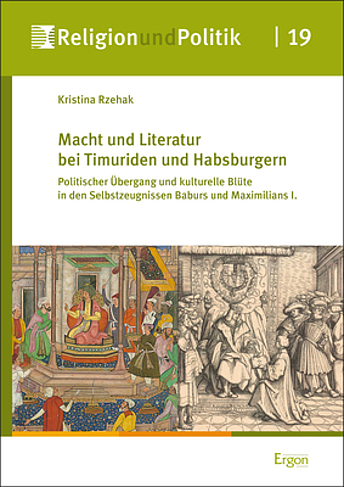englischThe current media coverage emphasizes the differences between “Christian West” and “Islamic East”. However, a similarity in development can be found by having a closer look at the history of the Islamic world. For example, a period during the rule of the Timurid dynasty is also known as ‘Renaissance’. It took place at the same time as the ‘Renaissance’ under the rule of the Habsburgs in the Holy Roman Empire.
This apparent similarity is used as a starting point for an analysis of the situation of the two cultural regions around 900/1500. The powerful dominions of the Habsburgs and the Timurids were ruled by the emperors Maximilian the First and Babur during that time. They both wrote self-testimonies which have been used for a comparative analysis. The thesis seeks to provide answers to the following questions: Which kind of important similarities can be found in the texts, and where do they originate? Can significant differences be identified which may reveal the starting point of the diverging development of the cultures?
The results of the analysis indicate many similarities in the self-presentations. They show that a typological comparison of literary texts can lead to a more precise and historically correct interpretation than that of current trends, which rather promote differences between the cultures of West and East. Even the detected difference can be insightful: it is seen as an early sign of divergence of the two cultures in the area of intolerance of ambiguities.
In der aktuellen Berichterstattung werden vor allem die Unterschiede zwischen dem christlichen Westen und dem islamischen Osten betont. Bei einem näheren Blick auf die Geschichte der beiden Kulturräume lässt sich jedoch eine ähnliche Entwicklung ausmachen: Als Renaissance wird sowohl eine Phase im Heiligen Römischen Reich unter den Habsburgern als auch im Herrschaftsgebiet der Timuriden bezeichnet.
Diese vermeintliche Ähnlichkeit bildet den Ausgangspunkt für eine Untersuchung der beiden Kulturräume in der Zeit um 900/1500. Damals lenkten die Herrscher Maximilian I. und Babur die Geschicke der beiden Dynastien. Ihre Selbstzeugnisse bilden die Grundlage für eine vergleichende Analyse. Die Fragen, die im Rahmen der Arbeit behandelt werden, lauten: Welche signifikanten Ähnlichkeiten zwischen diesen Texten lassen sich ausmachen und woher rühren sie? Lassen sich Unterschiede feststellen, die Hinweise auf eine Auseinanderentwicklung der beiden Kulturräume geben?
Die Analyse lässt zahlreiche Gemeinsamkeiten zutage treten. Es zeigt sich, dass der typologische Vergleich literarischer Texte dazu beitragen kann, aktuelle Entwicklungen, in denen die trennenden Elemente zwischen Westen und Osten stark betont werden, historisch präziser einzuordnen. Doch auch der herausgearbeitete Unterschied kann aufschlussreich sein: Er lässt sich als Vorzeichen auf die Auseinanderentwicklung beider Kulturräume im Bereich der Ambiguitätstoleranz deuten.
Der Autorin wurde der Nachwuchspreis des Mediävistenverbandes verliehen.



